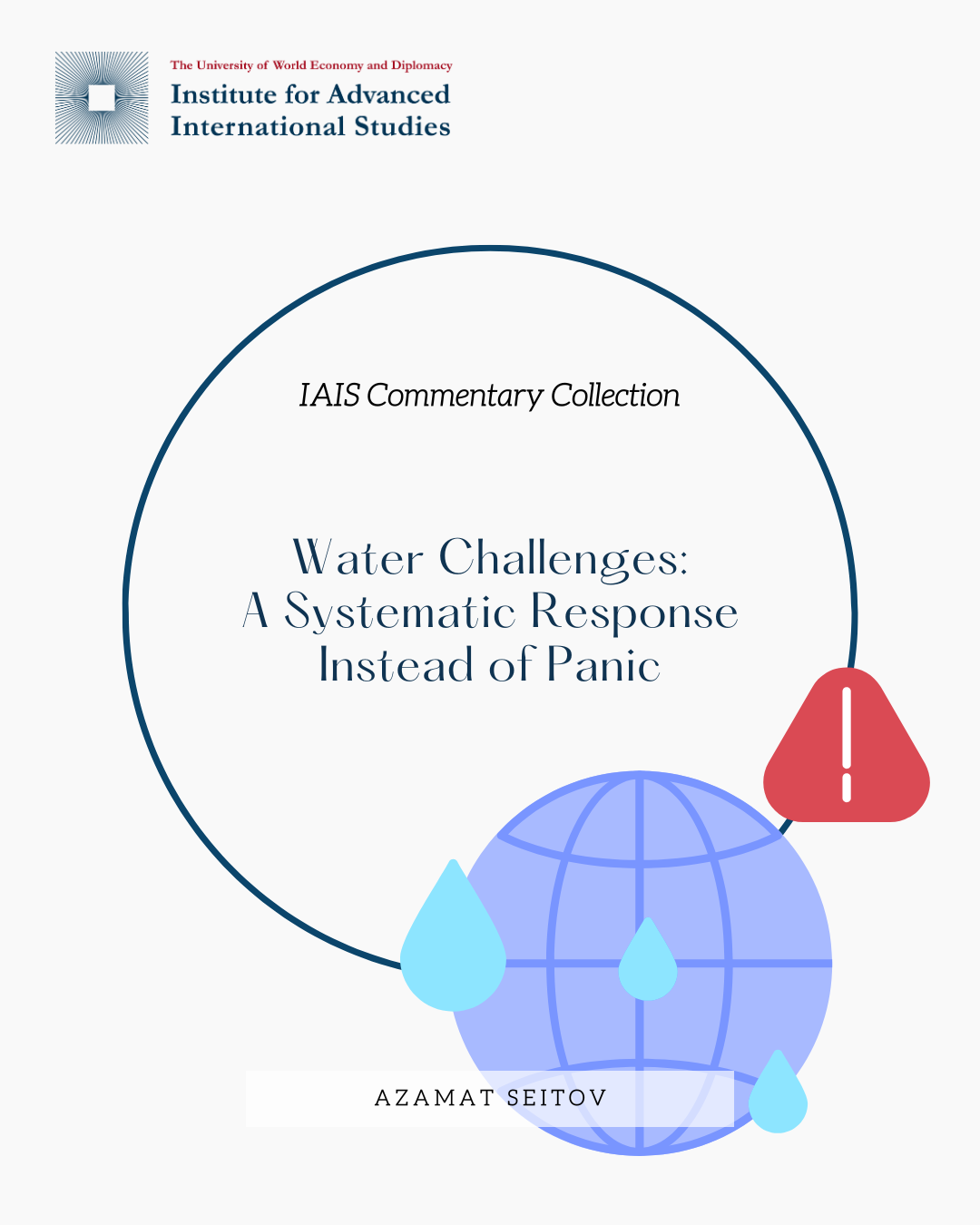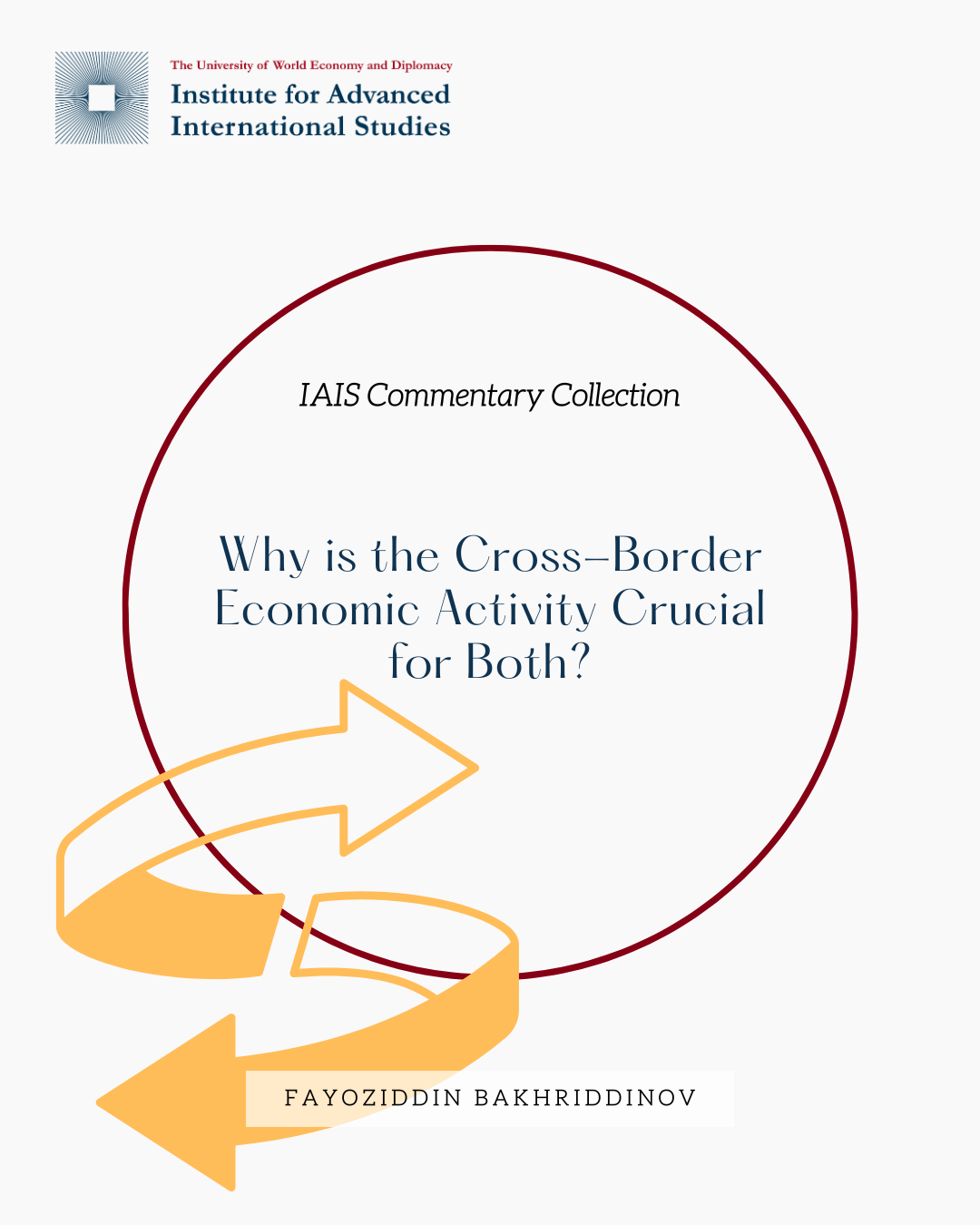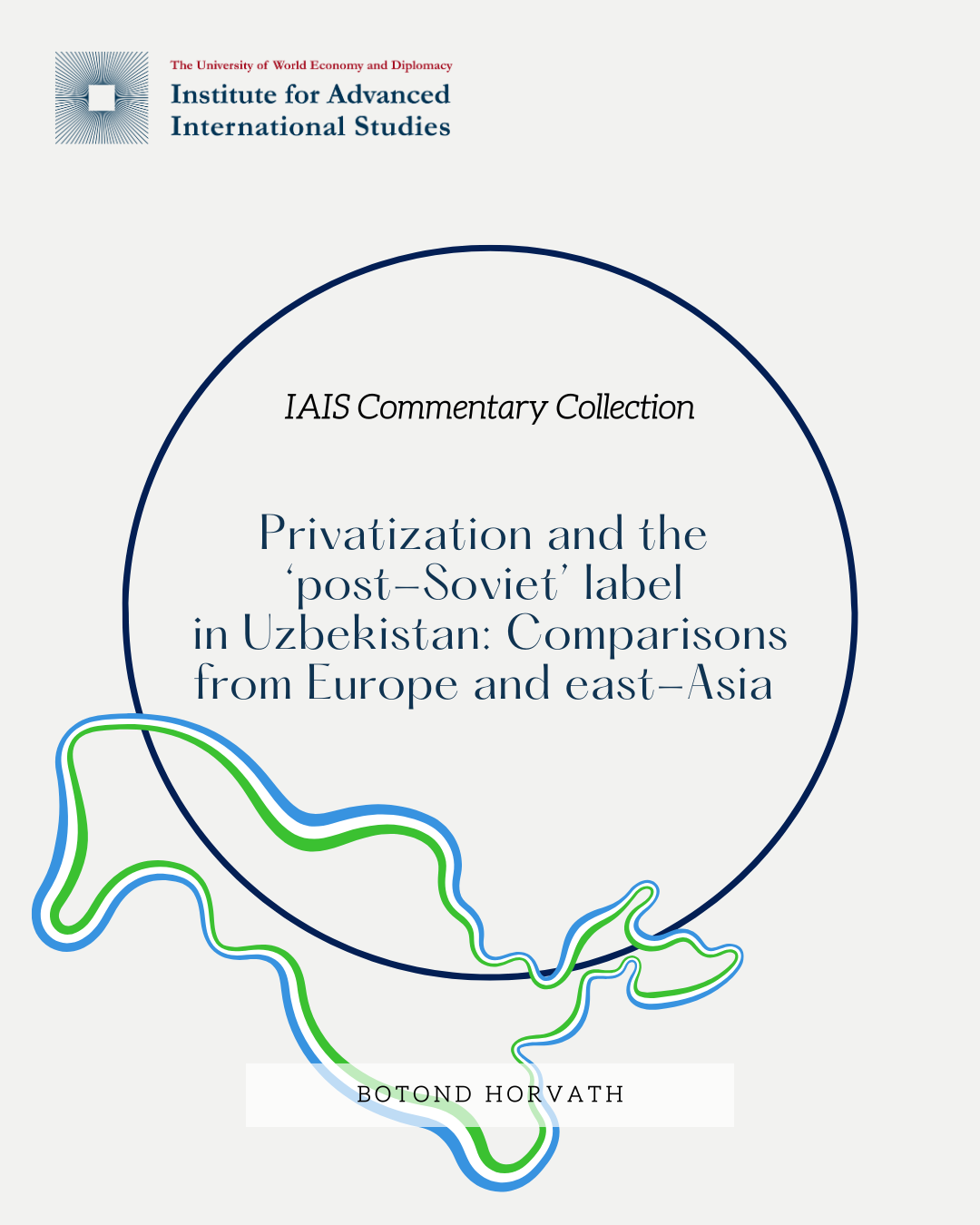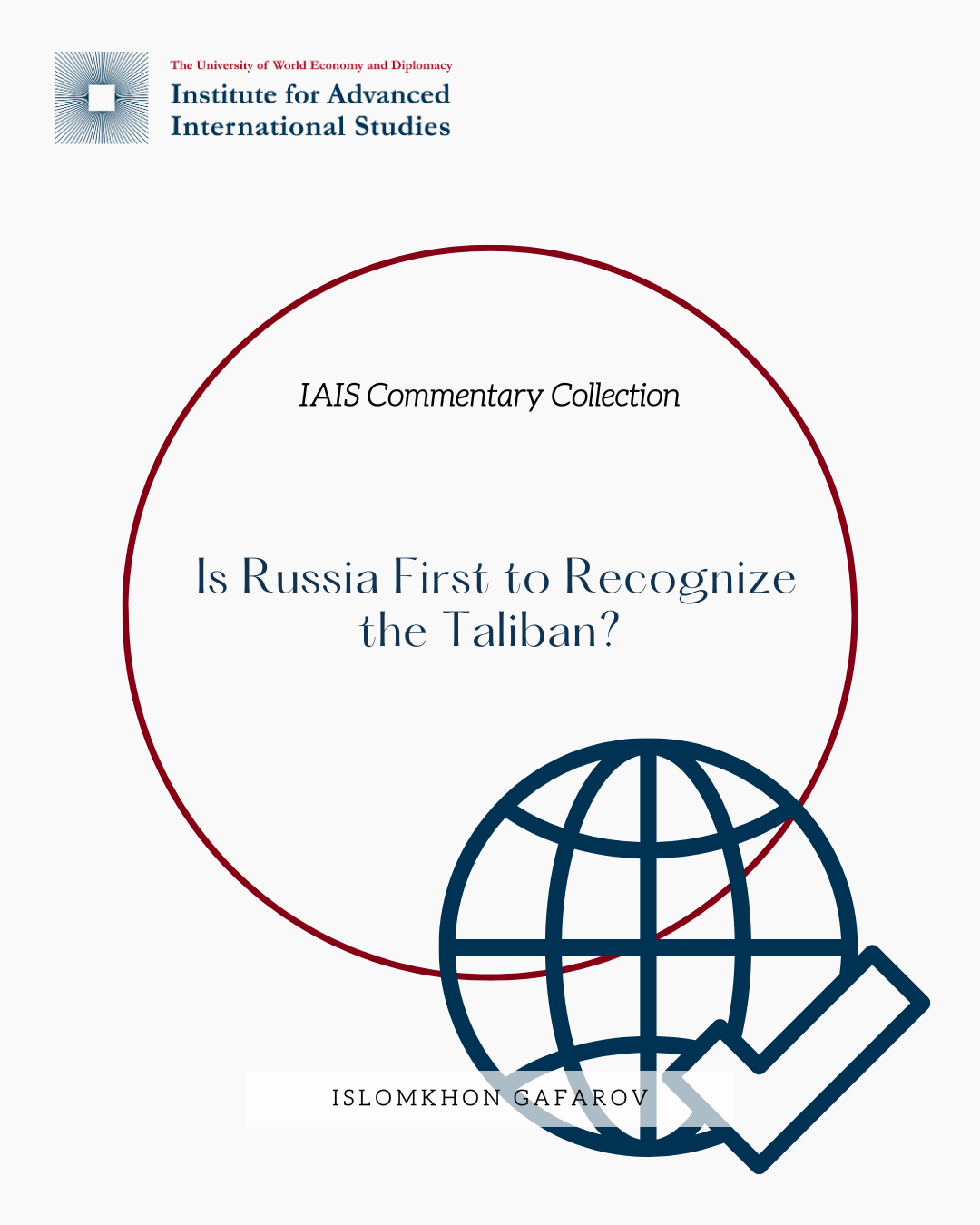Uzbekistan’s current context in global politics is often described as ‘post-Soviet.’ This label seems fitting when walking around Tashkent’s boulevards, exploring the subway, and witnessing the architecture. Additionally, in the sphere of soft power, the Russians have left a lasting legacy in Uzbekistan, specifically in the use of the Russian language and the popularity of Russian music. Nevertheless, in other nations described as post-Socialist, notably Russia and states in Central and Eastern Europe, the transition to market economy with the collapse of the USSR was rapid and chaotic, especially in the decade following the collapse. This is contrasted by Uzbekistan, which has only recently begun to implement economic privatization. After the death of Uzbekistan’s first president Islom Karimov in 2016, his successor, Shavkat Mirziyoyev, rapidly began to change the country’s economic structure. It can even be argued in certain areas like education that Uzbekistan’s recent policy goals are closer to transitions that have taken place in East-Asian nations, particularly Korea and Singapore, as opposed to Eastern European ones like Hungary or Russia.
Although never part of the Soviet Union, Hungary is a nation that experienced rapid economic changes in the 1990s, following the collapse of the Eastern bloc. Now an official observer state of the Organization of Turkic States, and enjoying friendly diplomatic relations with most Turkic states, Hungary provides a fitting case study for comparison with Uzbekistan’s current orientation as a post-Socialist nation. Although exhibiting present-day parallels, the direction of the two states’ trajectories differ. While Hungary rapidly privatized and as a result destabilized politically during the 1990s, as did most eastern European states including Russia, and then reconsolidated under prime minister Viktor Orbán, Uzbekistan is only at the beginning of a steadier and more gradual privatization, having experienced decades of centralized consolidation.
Hungarian prime minister Viktor Orbán welcomes president Shavkat Mirziyoyev in Budapest, May 20th, 2025, (Hungarian government photography)
Both Hungary and Uzbekistan manifest a strong emphasis on patriotism, which can be seen as a natural post-Soviet instinct against Russification and assimilation in both states. Regarding the education sector, the Hungarian Diaspora Scholarship program provides full scholarships to diaspora students at top domestic institutions, with the conditions that the scholars will learn Hungarian and engage in a project that serves their local diaspora community within 2 years after the completion of the scholarship. The goal of the program is to foster patriotic spirit and mitigate the effects of brain drain from Hungary. The El-yurt Umidi program in Uzbekistan, established in 2018 by the new president, takes the inverse solution to the same issue. By subsidizing study abroad, it attracts knowledge and experience to Uzbekistan from abroad, with the condition that scholarship recipients work for a minimum of 5 years (2 years for masters) after the completion of the program within Uzbekistan. The National Scholarship in Hungary also has a similar condition of working in Hungary for the same length of time that studies lasted under the scholarship, but the program only applies to domestic universities. What makes Uzbekistan’s policy different is its emphasis on sending students abroad, as opposed to simply consolidating them domestically.
Driving through any city in Uzbekistan, it is impossible not to notice the abundance of private learning centres, specifically for the English language, IELTS, and SAT. Consulting jobs in these areas offer incredibly lucrative opportunities for youth looking to start a business. Due to the legalization of private education in 2017, and thanks to the power of the internet and of social media in bringing success stories to students all over the country, there is sweeping demand for foreign education in Uzbekistan. Programs like El-yurt Umidi, and government subsidies into private education support the supply that is naturally growing to meet this demand. In 2024, the government announced support for paying back interest on loans that were taken out with the purpose of constructing new private educational institutions. According to this decision, the government will also cover 50% of the utility costs for newly constructed private school buildings. These drivers of privatization related to education have little in common with the experiences of other post-Socialist nations in Eastern Europe and are specific to the current social media age. The world was not so globalized or connected when Hungary was going through its transition economy 30 years ago. Further, Uzbekistan is still at an early phase of its development where education is often the only way out of poverty and low-wage labour for many families, further pulling demand.
In almost any economic sector, the ‘post-Soviet’ label fits Uzbekistan’s situation well. Its inheritance of a narrow-minded Soviet economy built entirely on cotton production, its fight against economic informalization, and its emphasis on independence and patriotism are just a few examples. Processes specific to education however are more recent, and parallels with other eastern bloc countries like Hungary become harder to draw. East-Asian nations like Singapore or Korea become relevant parallels. Singapore went from being a poor nation with high illiteracy when it declared independence to being one of the most advanced economies in the world, within the span of a few decades. Outside of its obvious geographical advantage, Singapore’s strong education system was central to its ascension, and made it the hub for technology and innovation that it is today. Singapore’s public education system is already very rigorous. Edusave accounts provide scholarships to students based on merit, incentivising competition. In 1985, like Uzbekistan recently, Singapore legalized independent schools with supplemental curricula. Like Uzbekistan, this move was largely inspired by educational programs from the US and UK.
The aim of Singapore’s policy at the time was the same as Uzbekistan’s today – to stimulate innovation in education. Although the difference between a public and private secondary school in Uzbekistan remains heavily noticeable, public opinion is optimistic. Instead of worrying about growing inequalities, students and teachers alike, in both types of schools, believe that such investments in human capital can only result in an upward spiral of innovation in the long-run for the country. Meritocratic competition in Uzbekistan has also been enlarged with the establishment of the Presidential School system in 2019. These schools are highly selective, with each school selecting only 24 students every year out of thousands of applications. Only one presidential school exists for each region of Uzbekistan, and students compete for top-tier education that is fully subsidized by the government and provides the Cambridge curriculum.
Ultimately, in cutting-edge and fundamental sectors of Uzbekistan’s economic development, most notably education, the ‘post-Soviet’ category in which Uzbekistan is so often placed is becoming almost completely irrelevant, save for the understanding of background context. Orbán’s Hungary, often described as being driven by post-Socialist dynamics in the sphere of politics, experienced a rapid period of privatization, market liberalization, and ultimately democratization in the early 1990s. Prime minister Orbán’s position as a result remains fragile, even after extensive reconsolidation and state capture, due to Hungary’s largely democratic culture. Uzbekistan’s more gradual and state supported trajectory provides a degree of stability, but political life must continue to advance at the same pace as economic and social life. Politics and economics are not separate disciplines, and where they are most interconnected is education. Education will bring new ideas into Uzbekistan, and the Uzbek government must continue to rejuvenate itself if long-term development is to be successful. As a parallel with South Korea would show, Uzbekistan is on the right path, but flexibility will be key to its long-term success.
Bibliography
“About the Hungarian Diaspora Scholarship.” Hungarian Diaspora Scholarship, March 25, 2025. https://diasporascholarship.hu/en/about/.
“Areas of Cooperation: Economic Cooperation.” Organizations of Turkic States, 2024. https://turkicstates.org/en/areas-of-cooperation-detail/2-economic-cooperation.
Cheang, Bryan, Bacchus Barua, Jake Fuss, Paige MacPherson, and Mackenzie Moir. “Meritocracy, Personal Responsibility, and Encouraging Investment: Lessons from Singapore’s Economic Growth Miracle.” Edited by Stephen Globerman. Realities of Socialism, Fraser Institute, February 2024, 83–106. https://doi.org/https://www.fraserinstitute.org/sites/default/files/meritocracy-personal-responsibility-and-encouraging-investment-lessons-from-Singapore.pdf.
Education, the driving force for the development of Korea: Land of the Morning Calm develops into a prominent player in the global economy. Accessed June 3, 2025. http://koreaneducentreinuk.org/wp-content/uploads/downloads/Education_the-driving-force-for-the-development-of-Korea.pdf
“Encouraging Measures to Open Private Schools Determined.” Kun.uz, February 2, 2024. https://kun.uz/en/news/2024/02/02/encouraging-measures-to-open-private-schools-determined.
“Monitoring Procedure: Approved by Resolution No. 2 of the Board of Trustees of the ‘El-Yurt Umidi’ Foundation.” eyuf.uz, April 22, 2021. https://eyuf.uz/site/view-page?id=134.
“Tájékoztatók a Magyar Állami Ösztöndíjjal Kapcsolatban.” Oktatási Hivatal, December 21, 2022. https://www.oktatas.hu/magyar-allami-osztondij/altalanos_tajekoztatok.
* The Institute for Advanced International Studies (IAIS) does not take institutional positions on any issues; the views represented herein are those of the author(s) and do not necessarily reflect the views of the IAIS.






